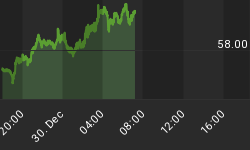Despite the several US economic releases this week (July ADP on private sector jobs, Q2 GDP, Fed decision and July non-farm payrolls and unemployment), the Q2 employment cost index released on Thursday may have been the more important one for currency and bond markets. Here's why...
Today's release of Q2 ECI showed a 0.7% rise quarter-on-quarter from +0.3% in Q1, with the wages & sales component rising 0.6% and the benefits component up 1.0%. The six-year highs in these figures are of no surprise when measured on a quarter-on-quarter basis, considering the low figures of the past quarters.
But, when comparing them to the same quarter the previous year, the ECI rose 2.0% from 1.8% in 1Q: the highest since Q4 2013, with the 1.8% year/year rise in the wages component also the highest in two quarters. The 2.5% year on year jump in benefits has not been seen in over three years.
Contrasting US-Eurozone price dynamics
These figures are by no means inflationary, but they support the argument that US inflation is stabilising and embolden the bullish case for the US dollar. The figures were released one day after personal consumption jumped 2.5% in Q2 as part of a 4.0% jump in Q2 GDP, the highest since Q3 of last year.
Again, none of these reports suggest a reason for the Federal Reserve to raise rates by year-end or by Q1 2015, but they highlight the contrasting dynamic with deteriorating price indices in the eurozone.
Today's release of the preliminary July eurozone CPI came on at 0.4% year on year from June's 0.5%, showing price growth at its lowest in nearly five years.
Even more disconcerting, is that core CPI (excluding volatile energy and food items) remained at 0.8%, after topping out at 1.0% in April. Such impending risk of disinflation in the eurozone suggests the ensuing rhetoric from the European Central Bank further supports the case for a weaker euro, especially as real two-year yields in the eurozone deepen in negative territory.
Meanwhile, the Fed's preferred inflation gauge - core personal consumption expenditure price index - rose 1.49% in May, the highest in 15 months.
Onto Friday's July non-farm payrolls & unemployment report
Friday's July NFP release is expected at 231k , the sixth straight figure above 200k, following 288k in June.
The July unemployment rate is seen unchanged at 6.1%, while average weekly earnings are expected to rise by 0.2% month on month, in line with the average of the past three and 12 months.
The employment participation will be closely watched to see whether it remains at a 36-year low of 62.8%. A combination of any rise in the participation rate, combined with an NFP above 230k and no rise in the unemployment rate of above 6.2%, would be sufficiently positive for the US dollar and bond yields.
US labour markets are already coming off a solid July employment report, showing one of the broadest improvements in employment creation (288K increase in non-farm payrolls, accompanied by a new six-year low in the unemployment rate of 6.1%).
Although, the labour force participation remained unchanged at a three-decade low of 62.8%, the U6 unemployment (marginally attached to labour force and part-time workers due to inability to find FT work) dropped to 12.1% - also the lowest since September 2008.
NFP figures posted their forty-fifth consecutive month of job creation in the US, matching the third longest run since World War Two, and four months short of an unprecedented streak of jobs creation.
Euro testing two-year trend line
The currency implications of the previously mentioned dynamics are increasingly favourable to the US currency, particularly against the euro and the Swiss franc.
The chart below highlights EUR/USD vulnerability around its 24-month trendline support as well as the negative convergence between price and stochastic/momentum indicators, suggesting $1.3270 is a viable target for the first half of August.

















